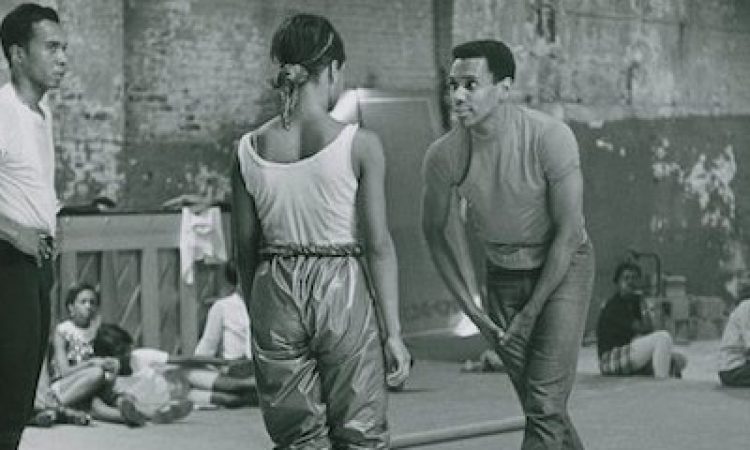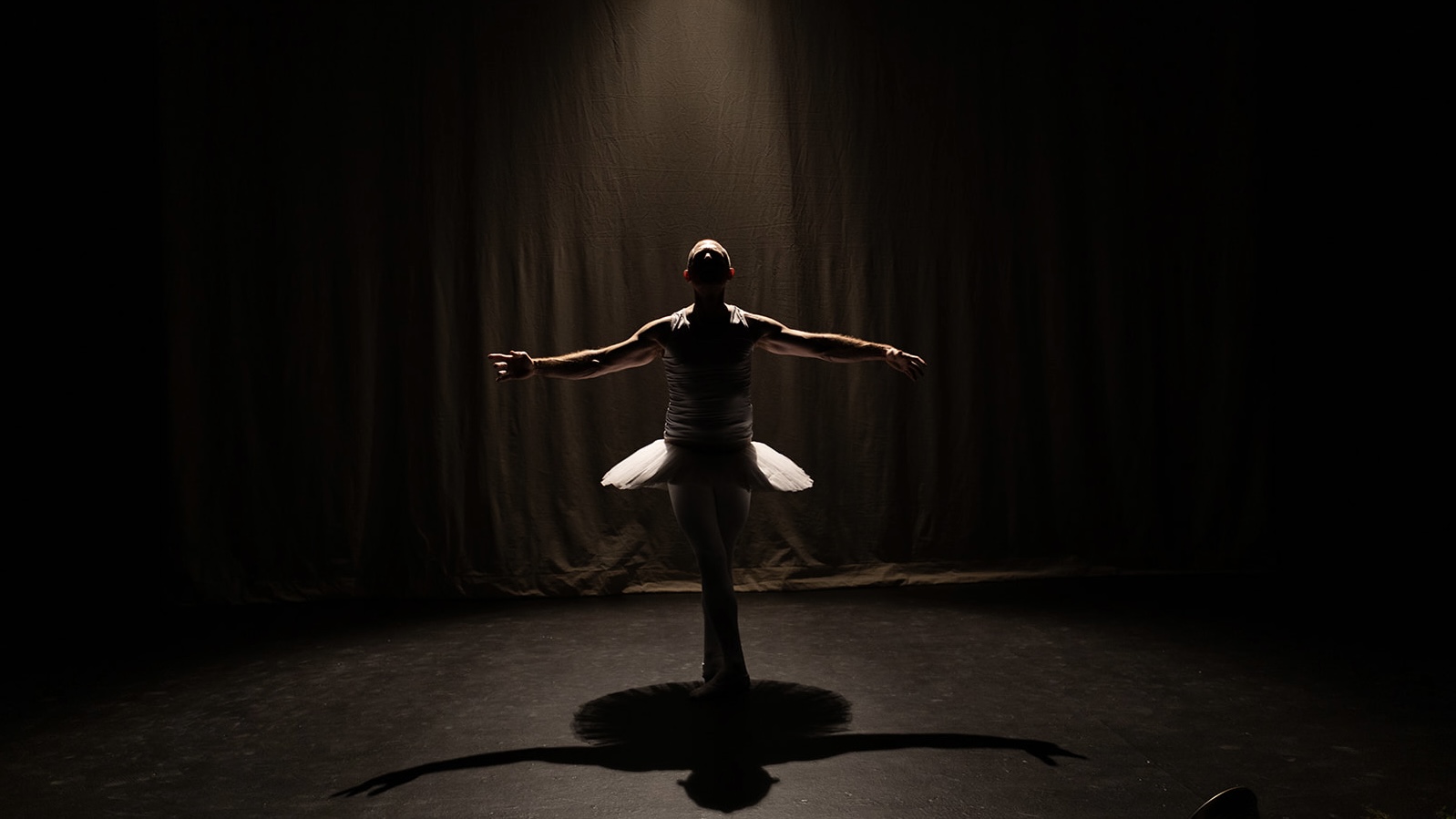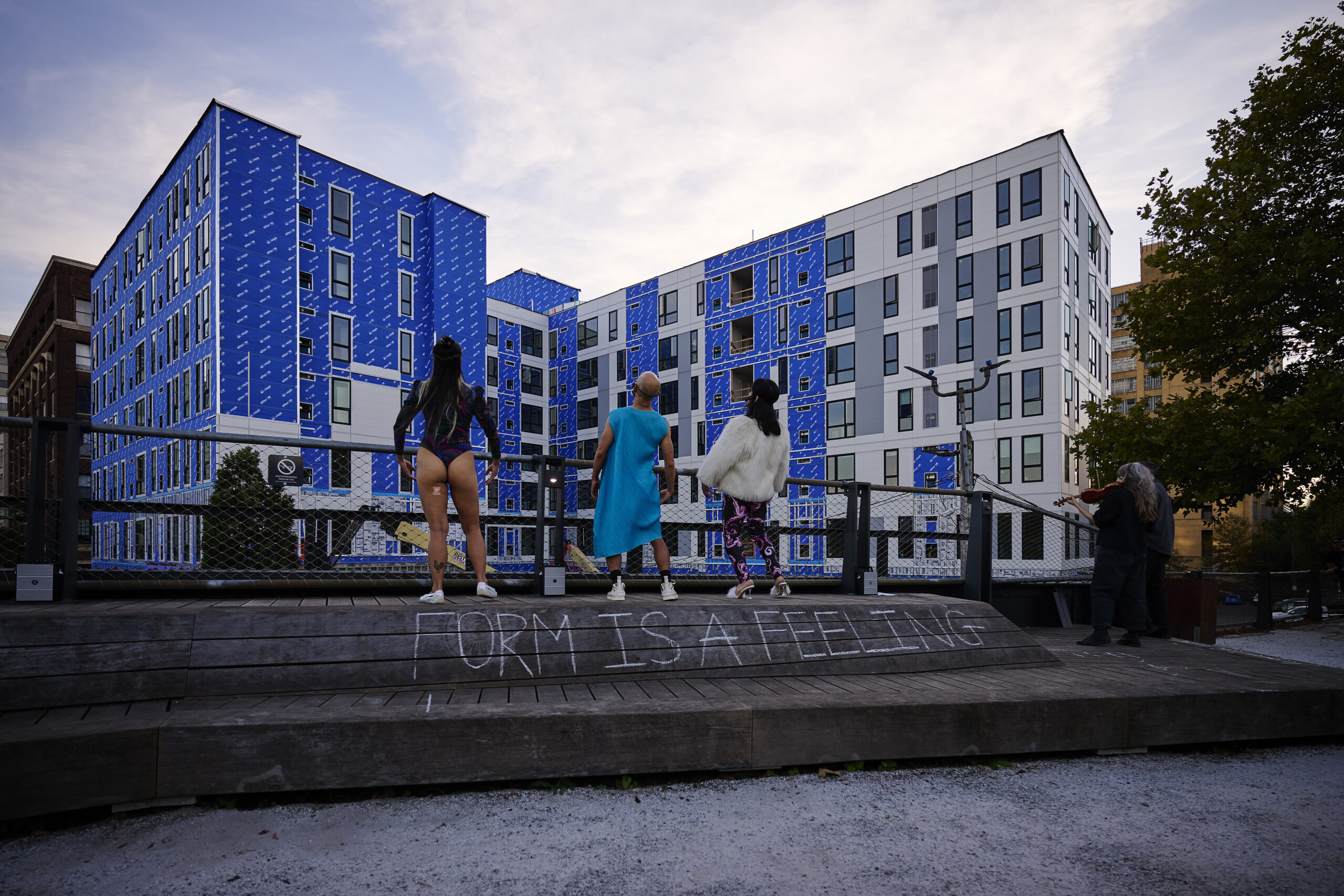Some faces are unforgettable. Such a one is Arthur Mitchell’s, exquisitely photographed, etched, and painted by a range of artists, including Antony Armstrong-Jones (Lord Snowdon), Peter Basch, Anthony Crickmay, Al Hirschfield, Marbeth, and Martha Swope. These alone are worth the visit, but there’s far more than that dramatic and inner-lit face on view at the Wallach Art Gallery’s extensive display of archival material, recently donated to Columbia University by Arthur Mitchell, best known as the first African-American principal of the New York City Ballet and as co-founder, with Karel Shook, of Dance Theatre of Harlem. Images—still and moving—capture Mitchell’s exquisite arms, a wingspread that expands the space his body occupies; his muscular and expressive torso; his long, agile legs; and his sensitivity to partners, ballerinas of renown including Diana Adams, Suzanne Farrell, Gloria Govrin, Allegra Kent, Patricia Neary, and Mimi Paul, among many others. They also reveal Mitchell as a dynamite performer reveling in his roles.
I had the privilege of a personal tour of the exhibition with its curator, Lynn Garafola, Professor Emerita of Dance at Barnard College, whose exuberant commentary lit up the works with information I could not, alas, jot down fast enough to share here. What I can write about, though, are the highlights of the show that my all-too-brief visit impressed on me. And, on a related note, I encourage you to plan on several hours for your visit to the Lenfest Center for the Arts, which houses the Wallach, at Broadway and 125th Street (the #1 MTA line takes you almost to its door).
First, the film/video footage, which Garafola assembled largely from the Jerome Robbins Dance Division of the New York Public Library, as well as from other sources. If you follow contemporary ballet, you may know many of these pieces, but I saw much (and this is only a partial list) for the first time: Mitchell dancing a hookah-smoking “Arabian” in Nutcracker, with the young Eliot Feld as Fritz; in Agon, partnering Diana Adams, the pairing that originated this work by George Balanchine, and another performance featuring Mitchell with Allegra Kent; as Puck in Balanchine’s A Midsummer Night’s Dream, where Mitchell gave his character a mysterious, knowing interpretation while still embracing the role’s fun; in Ivesiana with Patricia Neary, both dancers displaying a captivating combination of precision and spontaneity; navigating Bugaku’s extreme partnering with Mimi Paul; and as part of the ensemble in “Follow the Drinking Gourd” (from They Called Her Moses, about Harriet Tubman) with Donald McKayle’s company, reminding the viewer that Mitchell started as a modern dancer.
The exhibit is organized thematically, allowing the viewer to follow Mitchell beyond New York City Ballet to his connections with other companies and choreographers—his leading roles in Heinz Rosen’s The Moor of Venice (Munich), dancing Mercutio in John Cranko’s Romeo and Juliet (Stuttgart); and choreographing Richard Strauss’s Salome (Spoleto, Italy). Other sections of the show address his collaborations with visual artists and composers, his urge to action after the assassination of Martin Luther King, and his founding and guidance of Dance Theatre of Harlem (DTH), which brought classical ballet, performed by African-American artists, to Harlem, New York City, the United States, and the world. That company also re-envisioned the ballet canon (i.e., Giselle and Firebird) to reflect African and diasporic themes; its school trained dancers from communities outside the typical ballet bubble, who have gone on to major companies.
There is much beauty to awe the visitor: the images of Mitchell (and partners) displayed on the walls, the exquisite posters designed by Hilary Knight for DTH, Mitchell’s dancers behind the scenes and in performance of works that inspired viewers worldwide, and the dancing itself in the video excerpts. Explanatory notes accompany each image, and several electronic information stations allow the viewer to flip through additional visual and textual material. Mitchell’s life of vision and accomplishment has led him to self-identify as “the grandfather of diversity” in ballet. True, true. But going through this exhibition, I was also impressed by all those who shared Mitchell’s vision—organizations that featured him in his early years (i.e., the Boy Scouts, Committee for the State of Israel; Spoleto Festival); George Balanchine, who pulled Mitchell to world attention by featuring him in stunning pas de deux with white ballerinas when public stages forbade such mixing; and Karel Shook, who left his ballet-master post at the Dutch National Ballet to co-found DTH with Mitchell. And musicians, artists, dancers, and more.
My final note on this exhibition must be the awesome (a word I don’t use lightly) Frank Bara puzzle—eight feet long, 4000 pieces, and carved entirely of wood in several ingenious layers—that reveals the history, plans, designs, collaborators, works, tours, and so much more that DTH had accomplished at the time of the puzzle’s completion (1991). Cleverly displayed to uncover the three-dimensionality of this intricate and fascinating work of genius, the puzzle sits at the center of the Wallach’s exhibition space—playful, informative, and multi-colored. Garafola’s delight in pointing out to me the manifold facts and meanings painted, carved, and intercalated into the puzzle fueled my wish to spend a day or two sprawled on the floor with it, uncovering and studying every piece (it is, wisely, under a display case here). A true labor of love that took the artist over two years to complete, the puzzle is a fitting tribute to a man who labored tirelessly, with love and vision, to break new ground in and for the art of ballet.
Arthur Mitchell: Harlem’s Ballet Trailblazer, Wallach Gallery at Columbia University, January 12 to March 11, https://exhibitions.cul.columbia.edu/exhibits/show/mitchell






